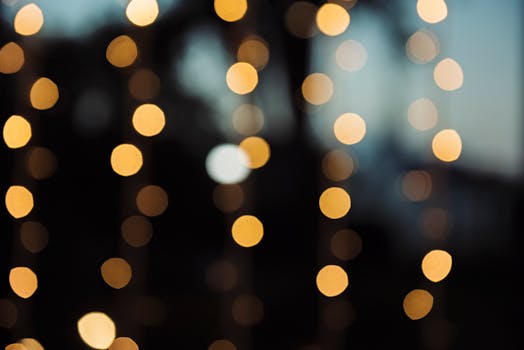How to Get Dreamy Bokeh in Portrait Photography: Advanced Tips and Techniques
Bokeh, the aesthetic quality of the blur produced in the out-of-focus parts of an image, is a sought-after effect in portrait photography. It adds depth, draws attention to the subject, and creates a dreamy atmosphere. Achieving that perfect bokeh requires a combination of the right equipment, settings, and techniques. In this article, we will explore advanced tips and techniques to help you create stunning bokeh in your portrait photography.
Understanding Bokeh: What Makes It Dreamy?
Bokeh is not just about blur; it’s about the quality of that blur. The shape and smoothness of the out-of-focus highlights can vary significantly based on several factors:
- Aperture Shape: The shape of the lens aperture blades affects the bokeh’s appearance. Rounded blades create smoother, more circular bokeh.
- Lens Quality: High-quality lenses often produce more pleasing bokeh due to better optical design.
- Distance: The distance between the subject and the background plays a crucial role in how pronounced the bokeh effect will be.
Choosing the Right Equipment
To achieve dreamy bokeh, selecting the right equipment is essential. Here are some key considerations:
- Lens Selection: Prime lenses with wide maximum apertures (f/1.2, f/1.4, or f/1.8) are ideal for creating beautiful bokeh. Popular choices include the Canon 50mm f/1.2 and the Nikon 85mm f/1.4.
- Full-Frame vs. Crop Sensor: Full-frame cameras tend to produce better bokeh due to their larger sensor size, which allows for a shallower depth of field.
- Specialty Lenses: Consider using specialty lenses like tilt-shift or vintage lenses, which can produce unique bokeh effects.
Mastering Camera Settings
Once you have the right equipment, mastering your camera settings is crucial for achieving dreamy bokeh. Here are some advanced tips:
- Aperture: Use a wide aperture (f/1.2 to f/2.8) to create a shallow depth of field. This will help isolate your subject from the background.
- Shutter Speed: Ensure your shutter speed is fast enough to avoid motion blur, especially in low light. A good rule of thumb is to use a shutter speed that is at least equal to the focal length of your lens.
- ISO Settings: Keep your ISO as low as possible to reduce noise, but don’t hesitate to increase it in low-light situations to maintain a fast shutter speed.
Composition Techniques for Enhanced Bokeh
Composition plays a significant role in how bokeh is perceived in your portraits. Here are some techniques to consider:
- Subject Placement: Position your subject at least 6-10 feet away from the background to enhance the bokeh effect.
- Background Selection: Choose backgrounds with lights or colors that can create interesting bokeh shapes. Street lights, fairy lights, or even sunlight filtering through leaves can produce beautiful effects.
- Framing: Use natural frames like doorways or branches to draw attention to your subject while enhancing the bokeh in the background.
Post-Processing Techniques
Even after capturing your images, post-processing can enhance the bokeh effect. Here are some tips:
- Selective Blur: Use software like Adobe Photoshop or Lightroom to selectively blur areas of the image, enhancing the bokeh effect.
- Color Grading: Adjust the colors in the background to make the bokeh pop, creating a more dreamy atmosphere.
- Vignette Effect: Adding a subtle vignette can help focus attention on the subject while enhancing the bokeh in the background.
Conclusion
Creating dreamy bokeh in portrait photography is an art that combines the right equipment, camera settings, composition techniques, and post-processing skills. By understanding the factors that contribute to bokeh quality and applying advanced techniques, photographers can elevate their portraits to new heights. Remember, practice is key—experiment with different lenses, settings, and backgrounds to discover what works best for your style. With these tips, you’ll be well on your way to capturing stunning portraits that feature beautiful, dreamy bokeh.
